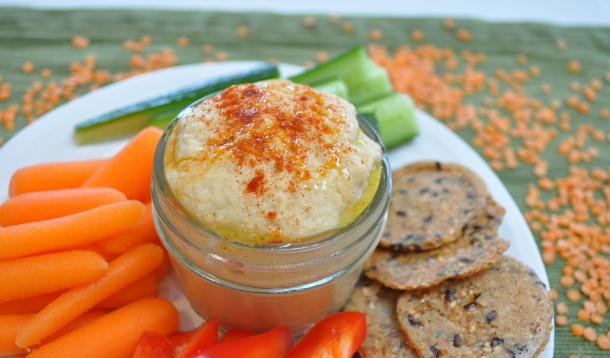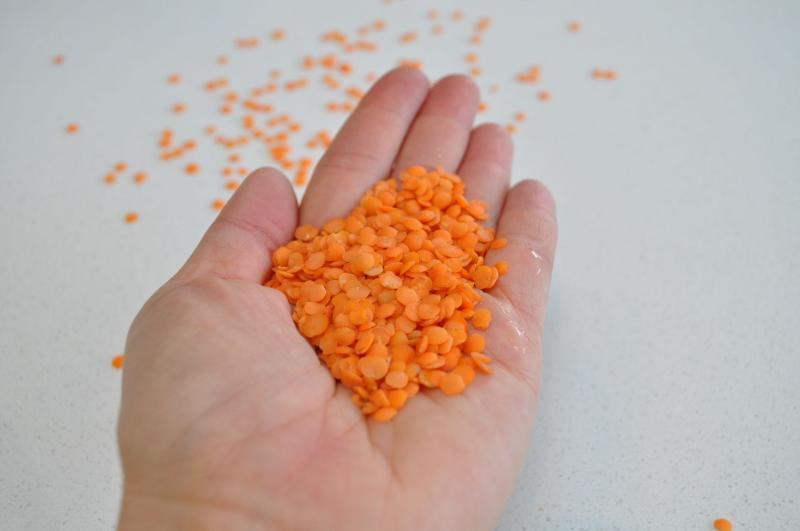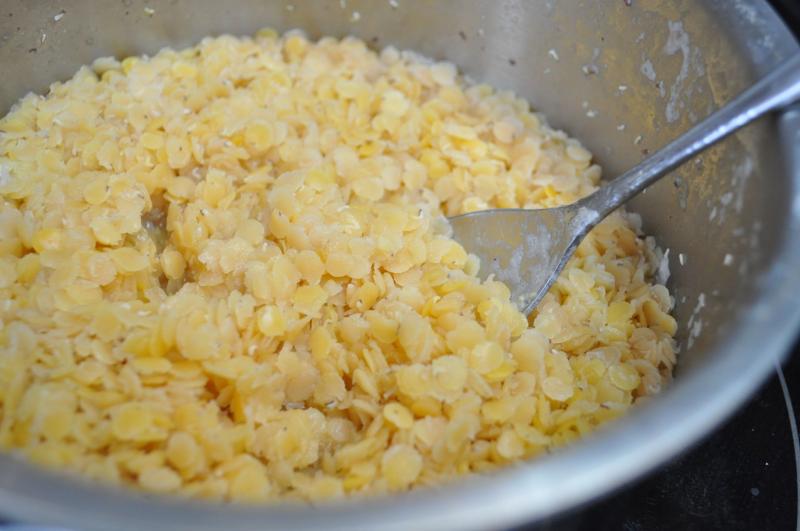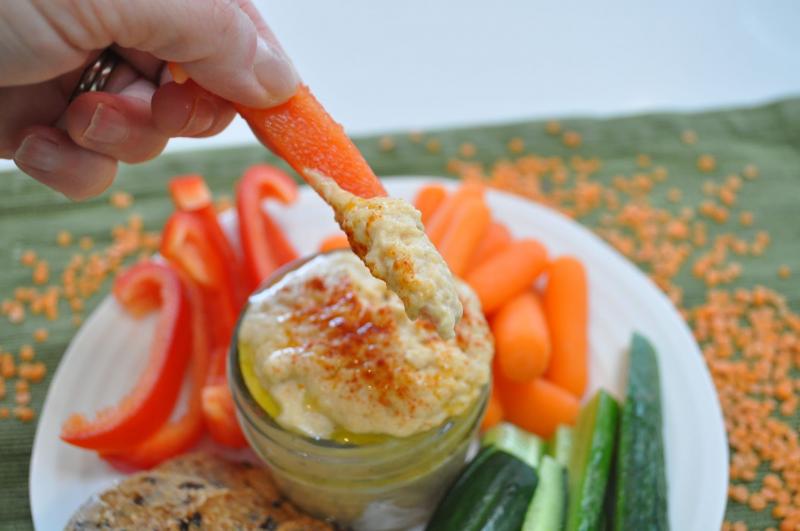
I know first-hand how challenging it can be to have a picky eater at home. My two year-old rarely touches her meals these days (mostly lunch and supper), because she decides that it's yucky before she's even tasted it. She has a select few foods that she loves and gobbles up happily, but beyond her safe repertoire, she's just not interested. But I'm able to take it in stride and rest easy knowing that it's just a phase (albeit a frustrating one). I go into meals armed with strategies that encourage her to explore foods (even if she doesn't taste them) and I try my best to focus on family time and modeling healthy eating myself. This is not easy. In fact, there have been several instances where I've been tempted to yell "WHY ARE YOU SO PICKY?!"
Can you relate?
When picky eating rears its ugly head, parents often turn to age-old strategies such as negotiating, bribing, coaxing, and micro-managing at meals. We now know that these well-meaning strategies don't work very well, and can even enable a picky eater, making matters worse over time. What many parents don't know, however, is that labeling their child "a picky eater," whether it's directly to the child, around family or friends, or out in public, can have negative consequences too.
Sarah MacGlaughlin, parenting educator and author of What Not to Say: Tools For Talking With Young Children agrees, and writes in a guest blog post: "When a child hears a word or phrase applied to him often enough, it “sticks” just like a name tag. This can change his self-image. Children tend to accept without question the labels adults use to describe their physical characteristics, personality, abilities, and limitations."
When a child is labeled a "picky eater," it not only makes him feel as though he is incapable of loving a variety of foods, but it will also grant him permission not to explore new foods — he's a "picky eater" after all. The label can easily enable the picky behaviour and decrease a child's self-confidence when it comes to eating and being adventurous at mealtime. What can drive this home even more is if your child has a sibling who eats really well and receives the label "good little eater" (in a child's mind, if he is not a "good eater," he must be a "bad eater," right?). Amy McCready, Parenting Expert and founder of Positive Parenting Solutions agrees and writes in her Huffington Post article that "when we label or compare our kids, we're praising them, or worse, belittling them, often without realizing it." Similarly, if parents or loved ones make comments such as "oh, he won't eat that anyway" or "don't serve him that food- it will be wasted," it will make the child feel incapable of ever accepting or enjoying that food.
In order to help your child widen his palate, and more importantly feel capable of accepting new foods, it's important to make him feel confident in his eating abilities; to gently encourage him to explore different foods at his own pace, and to remind him that even though he might not like a particular food today, he might like it the next time he tries it (or, in a few weeks from now). After all, we all have likes and dislikes, and these can change over time.
Making your child feel safe, secure and un-judged at the dinner table is key to his future eating success. Reassuring him that it's normal to not like a particular food now, but that he will likely accept it in the future will increase the chances of him trying it again in the future with an open mind.
When your child doesn't want to come to the table for a meal:
"It's okay if you don't want to eat, but you still need to come to the table. Mealtime is also about family time."
If your child refuses to eat his vegetables:
"You don't have to eat them if you don't want to. You can see if you feel up to trying them again tomorrow."
If someone comments on your child's lack of eating or asks if he's a "picky eater":
"He's still learning to like that food. He'll get there in his own time. For now, he will eat the foods that he enjoys."
If your child thinks a food is "yucky" before even trying it:
"It's hard to really know if a food is yucky before you test it out. If you don't feel ready to taste it yet, you could touch it or even lick it first."
* Exploring foods in any way is a step in the right direction.
If your child spits a food out after trying it:
"It's okay to try a food and decide that you don't want to swallow it. You were brave to try something new! Next time you might decide that you want to swallow it."
If he's not pleased with the types of foods served:
"You can choose what you would like to eat on your plate. You don't have to eat everything."
* It's important to always include at least one food that each child likes at meals so that there's always something for them to eat.
If your child says something like "Yuck, I hate mushrooms!"
"It's okay not to like mushrooms right now, but it's not okay to be rude. Instead, you could say "no thank you" when you don't want to eat something. Your tastes will change as you get older — you will probably start to like mushrooms one day soon!"
Learning to accept and enjoy new foods is similar to learning to ride a bike, learning to tie shoe laces or learning to read. It takes time, patience and encouragement. Let's drop the picky eating label and encourage them, advocate for them and celebrate their mini milestones.
If you have a picky eater at home and are experiencing power struggles at mealtimes, you might be interested in learning about my brand new online course for parents called "Turning the Tables on Picky Eating."
I also post free daily nutrition tips for parents over on my Facebook page - check it out!

Many of us are feeling the pinch when it comes to buying groceries these days. With rising food prices, I'm trying to be more cognizant of how much we spend on food. Most of our produce here in Canada comes from outside the country, and because of the cheap Canadian dollar, this means soaring prices for fruits and veggies — especially during the cold winter months. Buying cheaper fruits and veggies — broccoli cabbage, squash, carrots, apples, and pears for example — is a good idea, as well as turning to frozen fruits and veggies more often, can help to cut down on your grocery bill, as well as substituting out some of the meat that you normally buy, for nutritious and high protein (and easier-on-the-pocket-book) meat alternatives such as eggs, beans, lentils, and chickpeas.
In fact, 2016 has been declared by the UN "the year of the pulse," with the hope of encouraging consumers to purchase and consume more pulses (beans, lentils, peas and chickpeas). Not only are these foods cost-effective, but they're also extremely versatile, easy to work with and packed full of nutrition, specifically fibre, protein, iron, potassium, magnesium and zinc. As such, I've been trying to use my favourite pulse — the lentil — more often at home.
You don't have to soak lentils prior to cooking them (like in the case of dried beans or chickpeas)— you just have to boil them. You can pre-cook them, puree them, and store them easily for up to four days in the fridge. They also freeze well! They are a great addition to soups, salads, casseroles, baked goods, and granola bars. Oh, and hummus!
I admit, I usually buy hummus instead of making it. But because pre-packaged foods are a lot more expensive, regardless of rising food prices, I've decided to start making it at home. After all, it's super easy to make. Since I always have lentils on hand, I decided to make lentil hummus, something I've never made before. It turned out to be one of the best recipes I've ever tried!
Makes 3 cups of hummus
Ingredients
Directions
 Rinse 3/4 cup dry split lentils thoroughly and add to a medium saucepot with 1.5 cups salted water. Bring to a boil. Reduce heat, cover and simmer for 3-6 minutes (until lentils are just tender).
Rinse 3/4 cup dry split lentils thoroughly and add to a medium saucepot with 1.5 cups salted water. Bring to a boil. Reduce heat, cover and simmer for 3-6 minutes (until lentils are just tender).
 Transfer cooked lentils into a large microwave safe bowl and add chickpeas + juice, garlic, and salt. Microwave for 5 minutes.
Transfer cooked lentils into a large microwave safe bowl and add chickpeas + juice, garlic, and salt. Microwave for 5 minutes.
 Add microwaved chickpeas, lentils and garlic to a food processor as well as the tahini, olive oil, lemon juice and cumin. Process until smooth and creamy. For an even creamier texture, transfer to a high quality blender and blend for 1-2 minutes.
Add microwaved chickpeas, lentils and garlic to a food processor as well as the tahini, olive oil, lemon juice and cumin. Process until smooth and creamy. For an even creamier texture, transfer to a high quality blender and blend for 1-2 minutes.
 Chill before serving.
Chill before serving.



*Recipe adapted from www.ilovevegan.com's roasted garlic Red Lentil Hummus
For more easy recipes and nutrition tips for parents, check out my Facebook page where I share free info daily.
![]() Related: Carrot Hummus Recipe
Related: Carrot Hummus Recipe